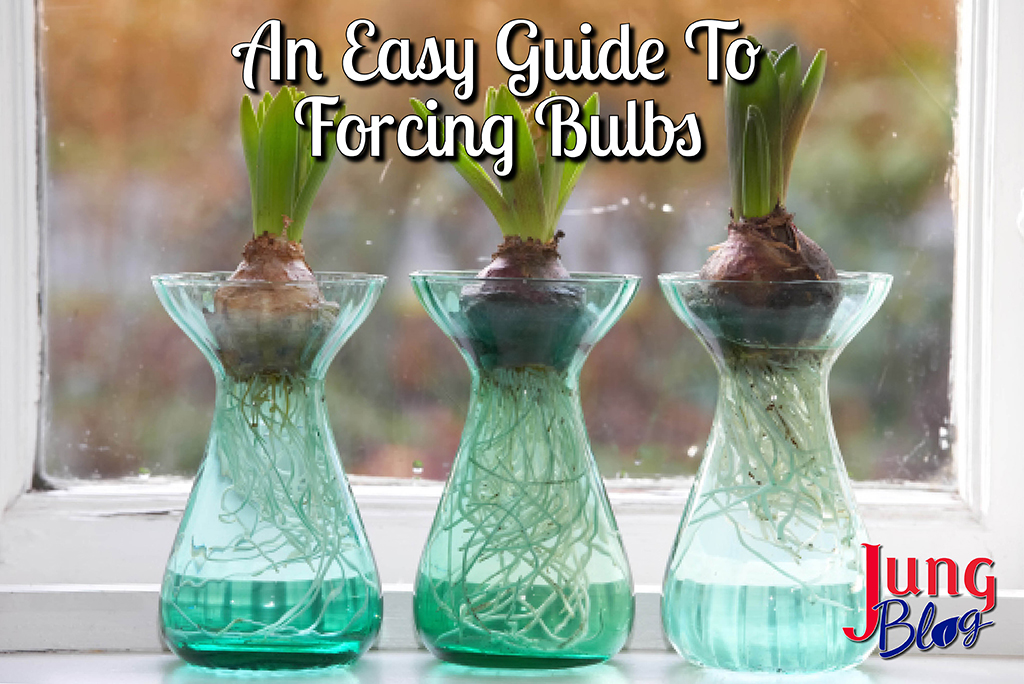
Updated: October 24, 2024
Every year, I look forward to planting bulbs in the fall. However, waiting for them to bloom requires patience. Fortunately, you can enjoy flowers in the middle of winter without traveling to a warm climate. Many of your favorite bulbs can be forced indoors, allowing you to keep away the winter blues. Before we dive into the specifics, we’ll look at the basics of bulb physiology.
The bulbs we plant in fall require a cold period to bloom, which occurs during winter. Bulbs can also receive this cold period through other means, like a refrigerator. Forcing bulbs involves planting them in containers and putting them in a fridge for a certain length. A cool garage or basement is suitable if the temperatures stay above freezing. Each bulb requires a specific chill period to bloom. Here’s a breakdown of the necessary cold period for standard bulbs.
| Bulb | Cold Period Length |
| Crocus | 13-15 Weeks |
| Daffodil | 14-16 Weeks |
| Grape Hyacinth | 12-14 Weeks |
| Hyacinth | 12-15 Weeks |
| Paperwhites | None |
| Tulip | 15-17 Weeks |
When Should I Plant Bulbs?

Ideally, you should plant bulbs in September or October. You can plant them later, but they won’t be ready to bloom until almost spring. For example, suppose you plant Crocus on October 15. In that case, they can be removed from the fridge in late January and will bloom a couple of weeks later. You can lengthen the bloom period by planting several pots and removing them from the fridge at different times.
How To Plant Bulbs

Forced bulbs are usually planted in containers and not in the ground. To determine the size of your containers, consider how many bulbs you want to grow. Daffodils and tulips have larger bulbs, while crocus and grape hyacinths are smaller. Forced bulbs will only spend a few months in these containers, so don’t be afraid to fill the pot with many bulbs even if they’re touching each other.
Soil is an important aspect of forcing bulbs, and proper drainage is essential. Always use containers with drainage holes and a quality potting mix. Soil taken from the garden will compact and create drainage issues. As you plant the bulbs, cover the top of them with a thin layer of soil. They don’t have to be buried deep like bulbs outside. Hyacinth and Paperwhites are often grown in a vase suspended above the water, allowing you to watch the roots grow.
Once the bulbs are planted and watered, move them into a fridge or another cool, dark location. A temperature of 35-45° is suitable. Like me, you may forget the date you planted them, so remember to label the bulbs and write the date when you planted them. The bulbs will need to be watered every couple of weeks during the cold period.
Note: If you chill the bulbs in a refrigerator, ensure no fresh fruit is present. Fruit creates a gas called Ethylene, which prevents flower development in bulbs.
After Cold Treatment Care For Bulbs
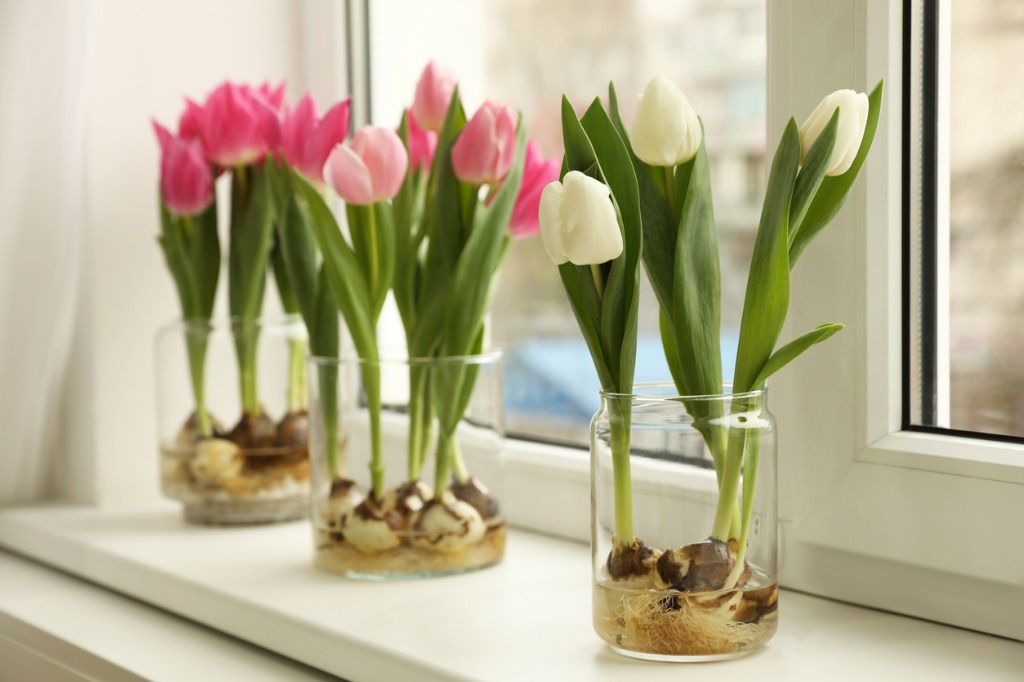
After a certain number of weeks, it’s time to bring the bulbs into warmer conditions. Your bulbs will likely have little shoots sprouting up, which is normal. You may also notice the leaf color is yellow or white. This occurs because they’ve been growing in the dark but will green up shortly after exposure to normal light. After you remove the bulbs from the fridge, put them in a location with bright light, like a windowsill. Over the 3-4 weeks, the bulbs will grow and eventually bloom. You can extend the bloom time by putting the pots in the fridge each night or putting the bulbs in a cooler location during the day. After the bulbs bloom, They can be planted outside in spring but may take a couple of years to rebloom.
6 Popular Types Of Bulbs
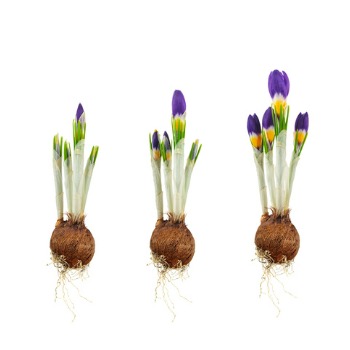
Crocus
These little flowers are a gem in the middle of winter. Their compact size allows you to plant them in large numbers, even in a small pot. Crocus are used to blooming in cool temperatures outside, so consider putting them in a cool location when they’re blooming. There are two types of Crocus, Snow, and Dutch. Dutch Crocus has larger blooms, while Snow Crocus blooms slightly earlier.
Daffodil
It’s hard to miss the cheery blooms of this bulb. Yellow is the most popular color, but you can grow orange and white daffodils too! They also come in different flower shapes and sizes. Consider growing these in a heavier pot, as the tall blooms may cause the pots to fall over.
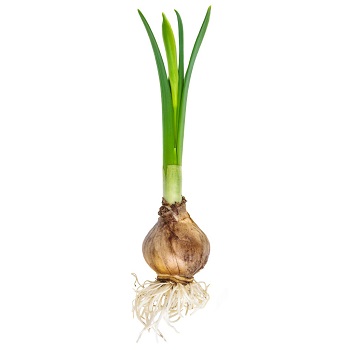
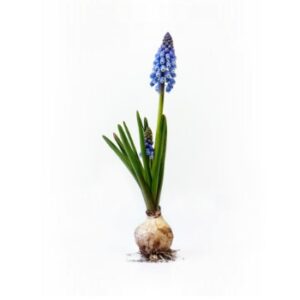
Grape Hyacinth
These purple bell-shaped flowers look beautiful on a sunny windowsill. Like the Crocus, consider planting large groups to maximize their impact.
Hyacinth
Hyacinths are my favorite bulbs to force. In addition to looking good, they smell amazing! They come in a variety of colors that look wonderful when mixed. You can buy forcing glasses made for Hyacinth, allowing you to grow them above water or over pebbles. Keeping the bulb above the water promotes healthy roots and discourages rot.

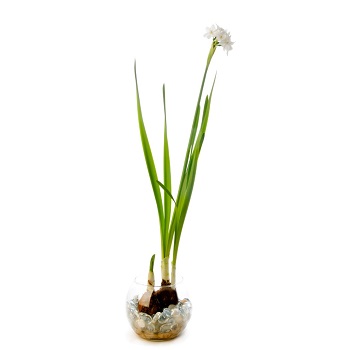
Paperwhites
These close relatives of daffodils require no cold treatment. Paperwhites are commonly grown around Christmas for their stunning white blooms and fragrance. They can be planted somewhere with bright light and will bloom after a few weeks. Keeping the bulbs in a cooler will prevent them from becoming leggy. Researchers have also found watering them with an alcohol solution will keep them compact. Paperwhites can be planted outside in warm climates (Zones 8-11). Paperwhites are a good choice for beginner gardeners.
Tulips
Tulips come in a wide range of sizes and colors, giving you plenty of options to force them. Like Hyacinth, Tulips can be grown in a vase over water or pebbles. Tulips require a more extended chill period than most bulbs, so consider planting them a little earlier. A heavier pot is ideal for growing Tulips, as they may flop when blooming, causing the pot to become unstable.


Forcing bulbs is a great way to enjoy fresh flowers throughout the winter. Consider this unique activity for your next garden project!
Other Recommended Reading

- 6 Tips For Storing Bulbs During Winter
- 6 Tips For Perfect Plant Pairings
- Fall Bulb Planting Tips
- Fall Gardening: End Of Season Tasks
- Fall Composting For Beginners
- 4 Simple Steps For Garden Tool Clean Up
At Jung Seed Co, we strive to be your go-to guide for all your gardening needs. Our YouTube channel The Garden Doctor by Dick Zondag is where he provides gardening tips for all levels of gardeners. When you need reliable gardening advice, turn to the trusted experts at Jung.
View our new catalog online or browse our website for all of your gardening favorites. To receive info on new products, exclusive deals, and specials, be sure to sign up for our weekly email. Join our Facebook page, to discuss all things gardening!
About the Author: Matthew Olson is a professional horticulturist and garden writer. He has a bachelor’s degree in horticulture from UW-River Falls and is a certified professional with the Minnesota Nursery and Landscape Association. His enthusiasm for plants and the outdoors brought him to the green industry. He regularly writes articles about gardening for both gardeners and industry professionals. He can be reached at matt@mattolsonhorticulture.com